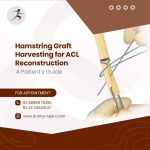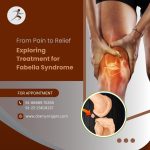Joint replacement comprises surgery to replace the ends of bones in an injured joint. This operation creates new joint surfaces. In shoulder replacement surgery, a shoulder specialist replaces the ends of the injured upper arm bone (humerus) and generally Glenoid (part of the scapula) or cap them with synthetic surfaces lined with plastic or metal. Shoulder joint modules may be held in place with cement, or they may be made with material that lets new bone to develop into the joint component over time to hold it in place without cement. Shoulder surgeons are now expert in a newer technique called a reverse total shoulder replacement for people who have excruciating arthritis in their shoulder and also have injury to the muscles around the shoulder. In this process, after the surgeon removes the injured bone and smooth’s the ends, he or she attaches the curved joint piece to the shoulder bone and uses the cup-shaped piece to substitute the top of the upper arm bone. Early results are inspiring. This operation is not right for everybody. Achievement depends not only on careful assessment to be sure it’s the right operation for you but also on having a shoulder surgeon with experience in reverse shoulder replacement.
Shoulder specialist habitually use general anesthesia for joint replacement surgeries. This means you’ll be insensible during Shoulder Replacement Surgery. But at times they use local anesthesia, which means you can’t feel the part of the surgery and you are drowsy, but you are still awake. The choice of anesthesia depends on your surgeon, on your complete health, and to some degree, on what you choose.Your shoulder surgeons may commend that you take antibiotics before and after the Shoulder Replacement Surgery to lessen the risk of infection. If you require any major dental work, your doctor may advise that you have it done before the operation. Infections can actually spread from other parts of the body, such as the mouth, to the synthetic joint and cause a severe problem.
Shoulder joint replacement
- Shoulder resurfacing arthroplasty (replacement of only the damaged joint surfaces, with nominal bone resection) is advised by the National Institute of Health and Care Excellence (NICE) as an apt treatment option.
- Partial: one articular surface is substituted, the humeral head; also known as shoulder hemiarthroplasty.
- Total: both articular surfaces are substituted by prostheses; also known as shoulder arthroplasty. Enhanced lasting results have increased the usage of total shoulder prostheses.
- Reverse: both articular surfaces are substituted but with the ‘ball’ on the glenoid and the ‘cup’, or ‘socket’, on the humerus. This is to mediatize the joint center of rotation in order to maximize the lever arm of the deltoid muscle in rotator cuff deficit.
Indications
- Severe agony and disability related with radiological changes not receptive to non-surgical cure.
- Shoulder joint replacement is generally executed for osteoarthritis, rheumatoid arthritis or where there has been injury due to strain. It may sometimes be used in recurrent shoulder instability.
- Hemiarthroplasty is a suitable cure for a fractured proximal end of humerus. However, Total Shoulder Replacement may lead to improved outcome in most other situations.
Pre-operative assessment
- The patient may have rheumatoid arthritis in the shoulder and this can obfuscate operative threat and postoperative rehabilitation.
- The patient is also expected to be elderly and so may have other health issues.
- Any potential cause of infection should be dealt former to arthroplasty, with special care given to dentition.
- Better pre-operative assessment is required to assess surgical risk and is usually carried out in secondary care.
- Patients should be recommended that the outcome of operation should be pain lessening and improved movement. However, movement of the shoulder may still be limited.
- The range of movement of the shoulder usually achieved allows the arm to be upturned to a height where the elbow is level with the shoulder but not above this.




